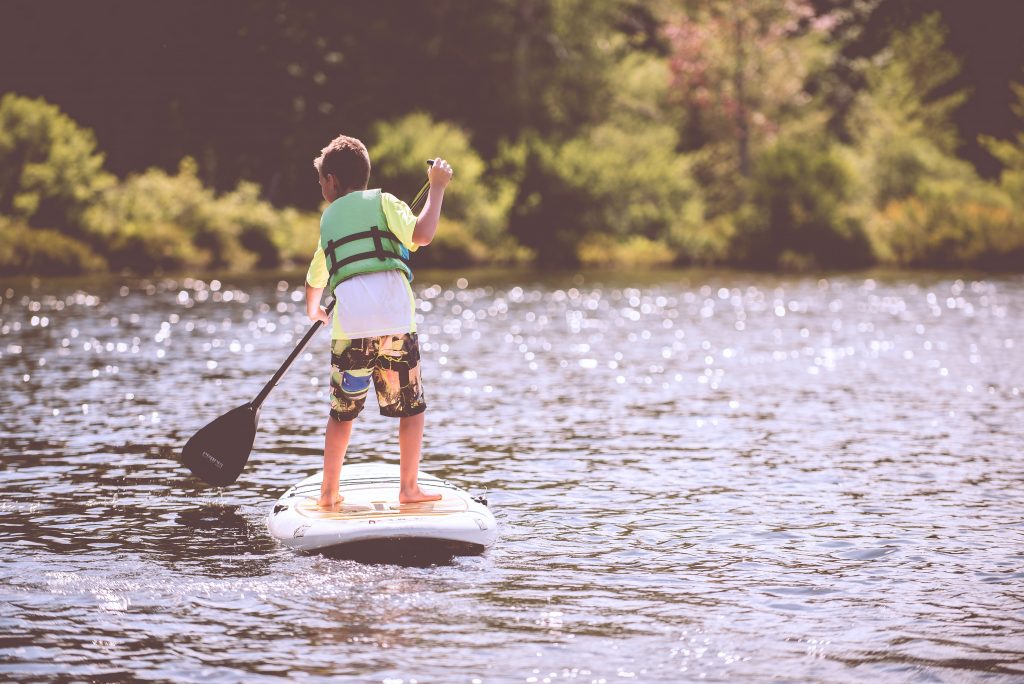Summer in South Dakota means time spent outdoors, and for many families that means time in the water. Whether you’re camping next to a lake or spending time on a boat, wearing a properly fitted life jacket is important at every age.
According to the CDC’s most recent data, the majority of boating deaths were caused by drowning; 88% of drowning victims were not wearing a life jacket. While a life jacket won’t remove risk completely, the CDC estimates half of all boating deaths might be prevented with the use of life jackets.
Finding the Right Size
Life jacket size for infants and children is based on their weight, and the U.S. Coast Guard divides them into three categories:
- Infant: less than 33 pounds
- Child: 33 to 55 pounds
- Youth: 55 to 88 pounds
In addition to these categories, there are three things your child’s life jacket should have:
- A crotch strap, which keeps the jacket from riding up or from going over their head should you need to pull them from the water.
- Some sort of grab handle or loop on the back to help pull a child from the water.
- Padded head support that will push their head above water and facing upright should they fall in face-first.
Check for Correct Fit
Once you’ve gotten the right weight category and have checked for the required safety features, putting the life jacket on your child and tightening the straps is important. This way it fits comfortably, but it’ll also be ready for wear, which is crucial for kids on the go. A life jacket can only protect kids when they wear it, so the more barriers you remove, the more likely they are to use it. Finally, make sure you test the fit while in the water. Do this in calm water so you can see that it fits correctly without gaps or restricting movement. This also gives your child a chance to see that it works and builds their confidence in the life jacket.
Parents have a tendency to buy their kids’ clothing or equipment slightly larger than necessary, thinking they’ll grow into it and therefore get more use out of it. With life jackets, however, buying a size too big is dangerous. For a life jacket to work properly, it must fit snugly to ensure it stays on once your child is in the water. A great way to test for a correct fit? Once your child is wearing their life jacket, pull up on the shoulders of the jacket; their chin and ears should not slip through the collar.
Letting your child wear a life jacket that is too small is also dangerous. Other than being uncomfortably tight — which makes kids less likely to wear the life jacket in the first place — a jacket that is too small may not provide enough buoyancy to keep your child’s head above water.
Other Ways to Reduce Risk
Having the correct life jacket for each of your children is only one part of the puzzle. Wearing a life jacket increases chance of survival, there are other ways to reduce risk for your entire family.
- Teach your children how to swim. Being comfortable in the water will help them in an emergency and helps reduce their chances of injury.
- Thinking ahead can prevent mishaps from happening. Always supervise children around water and make sure they use the buddy system.
- Check the weather before heading out on the water. Summer thunderstorms can pop up with little warning, and strong winds can cause unsafe conditions that increase your risk of leaving the boat or entering rough water.
- Learn CPR. This is a great skill to learn regardless of your family’s activities, but especially around water. Every second counts and having to find someone to help in an emergency can waste valuable time.
Resources
In 2000, South Dakota Game, Fish, and Parks started a Life Jacket Loaner Program. Families can borrow life jackets for up to two weeks at no cost. All of their life jackets are Coast Guard approved and are in clean, working order. The program operates on a first-come, first-served basis, and has multiple offices around the state. Here in the Black Hills, Outdoor Campus West is the most easily accessed location, but you can find the full list of participating locations in the state at the Game, Fish, and Parks website.
Water safety is important for all ages, and local YMCAs throughout the Black Hills offer classes to educate children and families. Parents can enroll their children in classes starting at age three. They’ll begin with water acclimation and work up to stroke mechanics and lap swimming.
The most important part of life jacket and boating safety isn’t just making sure you have a correct fit: it’s ensuring everyone wears their jacket every time they’re on the water. Even if you’re only going a short distance or the water is calm. It’s estimated the majority of drownings occur in calm waters where the victims were within easy reach of safety, and most victims had access to a life jacket but chose not to wear it. Even if you’re a confident swimmer, it’s important to set the example for your kids and wear a life jacket when you’re on the water, and make sure they do too.
Looking for your next family outing? Check out our list of swimming holes in the Black Hills. They’re family-friendly and kid approved!

